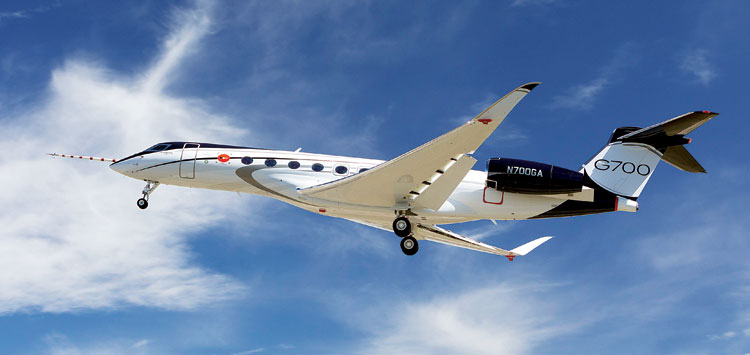The Promise of Biofuels in Powering Air Travel
The term Sustainable Aviation Fuel (SAF) is the name given to any advanced aviation biofuel for jet aircraft that is produced from a sustainable, renewable feedstock

A century and more of powered flight has seen spectacular progress in aircraft and their operation. However, one thing remains unchanged – the near-total dependence of aviation on oil. Spurred on by environmentalists, most industries are firmly on track to dramatically reduce if not eliminate, their addiction to fossil fuels. In fact, most cars, buses and trains running on electricity could become a reality in the foreseeable future. But while many small and slow electric-powered aircraft are already flying, none of the current fossil fuel alternatives will work for large and fast passenger aircraft. So why can’t airliners simply continue to be powered by Aviation Turbine Fuel (ATF)?
Burning fossil fuels is almost certainly the primary cause of global warming that leads to climate change. Flying impacts the environment mainly because engines emit heat, noise, particulates and Greenhouse Gases (GHG) like Carbon Dioxide (CO2). At present, these carbon emissions do not constitute a large portion of the total emissions – in fact just two to three per cent. However, since aviation is one of the fastest growing major sectors, it could account for five to fifteen per cent of global GHG emissions by 2050. Despite the efforts of several airlines to clean up their act, the net results are uninspiring. For instance, Spanish carrier Iberia managed to reduce its emissions per seat by about six per cent in 2017, yet its absolute emissions increased by seven per cent thanks to increase in the number of flights.
The two measures considered most likely to reduce aviation emissions in the near and medium term are improvements in jet engine technology and the rapid introduction of biofuels. However, switching over to biofuels is easier said than done.

DEFINING BIOFUELS There is no single definition of what constitutes a biofuel. As the name suggests, biofuels are fuels derived from plants and plant products. These fuels taken from renewable – that is non-fossil sources – can be mixed with fossil fuels to improve their efficiency. More recently, the term Sustainable Aviation Fuel (SAF) has come into vogue. SAF is the name given to any advanced aviation biofuel for jet aircraft that is produced from a sustainable, renewable feedstock and is certified as being sustainable by a reputed agency such as the Roundtable on Sustainable Biomaterials (RSB). This certification is in addition to safety and performance criteria that all fuels intended for passenger aircraft must meet. Importantly, any SAF must be a “drop-in” fuel, that is, with nearidentical chemical composition to equivalent petroleum-based fuel. This means it can be directly mixed with ATF and used without any modification to the engine or to the airport fuelling service.
GLOBAL HEADWAY Not too long ago, on February 24, 2008, a Virgin Atlantic Boeing 747 airliner flew the first biofuel test flight between London and Amsterdam. One of its four jet engines was powered using a 20/80 blend of biofuel sourced from coconut and babassu with ATF. Following a technical review involving aircraft and engine manufacturers as well as oil companies, biofuels were approved for commercial use in July 2011. The first passenger flights powered by biofuel blends soon followed.
Since then, several manufacturers and airlines have been experimenting with biofuels. Most recently, on February 14, 2020, General Dynamics announced that its Gulfstream G700 business jet made its first test flight powered by a 30/70 blend of SAF and jet fuel.
The two measures considered most likely to reduce aviation emissions in the near and medium term are improvements in jet engine technology and the rapid introduction of biofuels
However, biofuels are no silver bullet and every option needs to be pursued to curb carbon emissions. For instance, Delta Air Lines, headquartered in Atlanta, Georgia, will commit $1 billion over the next 10 years in an effort to become the world’s first carbon-neutral airline. It aims to reduce its carbon footprint by increasing efficiency and replacing ATF with SAF. It will also replace its existing jets with models that are 20 to 25 per cent more fuel-efficient.
According to an International Air Transport Association (IATA) report of May 2019, although SAF is being used in commercial flights daily, the present production of such fuel amounts to less than one per cent of the total jet fuel demand. There is another way of looking at how far the industry needs to go. Against the current 46.1 million commercial flights annually, the total number of flights that have ever flown with a biofuel blend is around 2,00,000.
INDIA’S EFORTS India entered the SAF era on August 27, 2018, when low-cost carrier SpiceJet successfully operated a Bombardier Q400 aircraft from Dehradun to Delhi. It was powered by a 25/75 blend of biofuel and ATF. The jatropha-based biofuel was developed by the CSIR-Indian Institute of Petroleum (IIP), Dehradun. However, since then, it is the Indian Air Force (IAF) that has made better progress with SAF for its transport and helicopter fleets. On, May 31, 2019, the Centre for Military Aviation Certification (CEMILAC) cleared the blending of ten per cent biofuel across the IAF’s fleet of over 100 An-32 turboprop transport aircraft. And on January 31, 2020, an IAF An-32 aircraft took off from Leh with both engines powered by a ten per cent blend of biofuel, thus validating Indian biofuel for operational flying.
FOR OR AGAINST? Biofuels are exceedingly complex products with many advantages and equally numerous disadvantages. There is still no definitive answer about how they measure up in terms of efficiency and ecological impact. According to IATA, “A flight completely powered by sustainable fuel has the potential to reduce the carbon emissions of that flight by up to 80 per cent.” However, most flights thus far have used only small quantities of biofuel in one engine.

Raw biomass feedstock can be converted into biofuel through various processes. Several sources are suitable including oilseed crops such as soybean and sunflower, animal fats, sugar crops, plants and wood. Not only can these crops be grown again and again, but waste from them can also be used to manufacture biofuels. There are also multiple methods of manufacturing biofuels in different places and climates. Even domestic waste and industrial gases can be turned into SAF. Hence, it can be produced locally, as and when needed and close to airports, thus boosting the local economy. Storage and transportation costs can be accordingly reduced.
Biofuels are no silver bullet and every option needs to be pursued to curb carbon emissions
The main factor impeding the widespread use of SAF is cost. Not only do biofuels require high initial investment, but they currently cost three to four times as much as ATF. Refining SAF to increase its energy output is also more difficult than refining petroleum. And biofuels need to be burnt in larger quantities to produce the same amount of energy as fossil fuels.
Although biofuels have a lower carbon footprint, growing their feedstock uses copious amounts of oil and water, often severely stretching local water resources. In some countries, most notably Brazil – a pioneer in biofuels – they compete with food for arable land, raise food prices and have triggered rampant deforestation. While many biofuel crops can be grown on arid or marginal land, much of the world’s remaining forests could be destroyed in the process. This would adversely affect the habitat and biodiversity of many plants and animals.
WHEN CRUDE RUNS OUT Since crude oil is a non-renewable source, it will eventually dry up. Biofuels are, therefore, the obvious solution. However, while evaluating any biofuel, one must assess its full lifecycle cost and impact from growth to production to usage. The global supply of biofuels is also still pitifully small because economics trumps ecological considerations. At present, there are reportedly only five airports with regular biofuel distribution namely Bergen, Norway; Brisbane, Australia; Los Angeles; Oslo and Stockholm. A few other airports offer occasional supply.
Given the will, many of the problems associated with biofuel production and usage can be solved. The most obvious step is to make the entire SAF process, from growth, harvesting and crushing, to fermenting and refining, more efficient. And the use of arable land that makes food more expensive needs to be prohibited. SAF made from lumber waste, logging waste and municipal solid waste can avoid many of the controversies that have plagued biofuel production so far.
According to Alexandre de Juniac, IATA’s Director General and CEO, “The momentum for SAF is now unstoppable.”
In truth, if the airline industry is to meet its ambitious goals of carbon-neutral growth from 2020 onwards and a 50 per cent reduction in CO2 emissions by 2050 as compared to 2005, SAFs will be key. But research and investment need to be intensified and sustained in order to develop SAFs that genuinely cut emissions without adversely affecting the environment.





